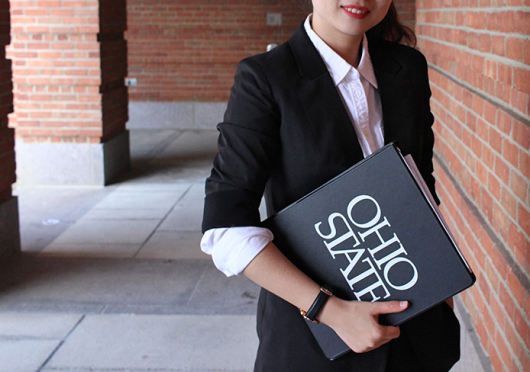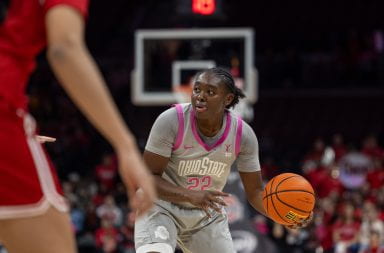
According to data, women comprise almost 15 percent of executive officer positions and hold around 17 percent of Fortune 500 board seats. Credit: Photo illustration by Yue Wu / Lantern photographer
Heidi Liou does not agree with how women are viewed in the world of business, but she hasn’t let any societal predispositions stop her from pursuing her professional goals.
“I will have to work extra hard to prove to people what I am capable of,” said Liou, a fourth-year in fashion and retail studies. “As a woman, my passion could be seen as aggressive and may turn people away from wanting to collaborate with me.”
But Liou is not alone in her determination to promote women’s success in the workforce.
Women were found to outperform men when it comes to raising funds on sites like Kickstarter, according to a study conducted by Ethan Mollick, an assistant professor at the University of Pennsylvania, and Jason Greenberg, a professor at New York University. Although women own only 30 percent of all companies, the study said they are 13 percent more likely to meet their fundraising goals online.
Last month, Liou participated in an OUAB-sponsored event where students had the chance to pitch their business ventures to “Shark Tank” TV star and multimillionaire entrepreneur Daymond John. Liou, who was the only female presenter out of four participants, presented her idea for a product called TigerBra, which is a sports bra that measures heart rate, body temperature and hydration, she said.
But there’s still a gap between the sexes when it comes to women taking on leadership roles in business.
Women hold almost 15 percent of executive officer positions and make up about 17 percent of Fortune 500 board seats, according to statistics from the Center for American Progress.
Additionally, the highest-paid female CEO in 2013 made less than a third of what the highest-paid male CEOs made in the same year, according to an analysis of executives’ pay published in The Wall Street Journal. Additionally, data from executive compensation firm Equilar stated that of the 200 highest-paid CEOs in 2014, only 11 were women.
Liou said strong women in powerful positions are oftentimes seen as overzealous and intimidating.
“Looking at history, (women) ‘belong at home.’ They aren’t seen as people who will bring in the income for the family,” she said. “We can change this by educating people in the workplace about feminism … It is learning how to treat people equally.”
Elyssa Helker, a third-year in accounting and finance and incoming president of the Undergraduate Business Women’s Association, said she believes the defined gender roles play a large part in the inequality of executive positions and salary.
“Men receive more favored treatment because they can receive more face time with upper management through activities deemed suitable for only businessmen, such as golf,” Helker said. “Many companies offer maternity leave, but not paternity leave. This encourages women to stay home since they will be paid or assured a job when they return to the company, while discouraging the ability for men to be able to stay home.”
Helker said she also feels that OSU has been very supportive by providing several different opportunities and resources for women in business. Women are not excluded from any position, class or organization, and many different programs are promoted to encourage gender equality, she said.
“The Office of Career Management talks to women about how to successfully have talks about negotiating wages,” she said.
Additionally, Helker said organizations such as the Undergraduate Business Women’s Association allow interaction and networking opportunities with an array of women speakers who both motivate and inspire students.
“Having an organization created to inspire women to lead and take charge of their careers is the first step in giving women confidence in their professions,” she said. “We aim to create a feeling of mentoring in the organization so that girls can start having conservations early.”
The Fisher College of Business undergraduate program at OSU has a population of 42 percent females, according to its website.
Zoya Alam, a fourth-year in marketing, said she understands why women would be so supportive of one another.
“A lot of women want to be successful (and) they want to be in their career, but they also want to be a wife and they want to be a mother,” she said. “Right now in our generation (everyone’s) trying to find that balance.”
Alam advised fellow women to find confidence in who they are and not to let their gender negatively impact the way they interact with others or view themselves.
“It’s really important for girls to know that when they’re talking, they’re being respected,” she said. “Always take initiative, always ask questions, never doubt yourself.”


